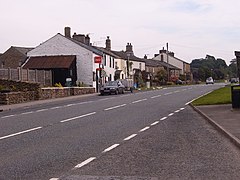
Anne Brontë was an English novelist and poet, the youngest member of the Brontë literary family.
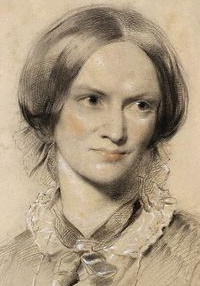
Charlotte Brontë was an English novelist and poet, the eldest of the three Brontë sisters who survived into adulthood and whose novels became classics of English literature.

Emily Jane Brontë was an English novelist and poet who is best known for her only novel, Wuthering Heights, now considered a classic of English literature. She also published one book of poetry with her sisters Charlotte and Anne titled Poems by Currer, Ellis and Acton Bell with her own poems finding regard as poetic genius. Emily was the third-eldest of the four surviving Brontë siblings, between the youngest Anne and her brother Branwell. She published under the pen name Ellis Bell.

Jane Eyre is a novel by English writer Charlotte Brontë, published under the pen name "Currer Bell", on 16 October 1847, by Smith, Elder & Co. of London. The first American edition was published the following year by Harper & Brothers of New York. Jane Eyre follows the experiences of its eponymous heroine, including her growth to adulthood and her love for Mr. Rochester, the brooding master of Thornfield Hall.
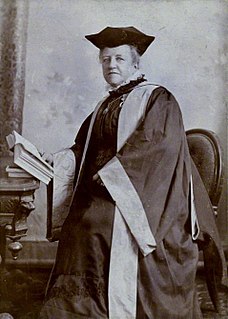
Dorothea Beale LL.D. was a suffragist, educational reformer and author. As Principal of Cheltenham Ladies' College, she became the founder of St Hilda's College, Oxford.

The Brontës were a nineteenth-century literary family, born in the village of Thornton and later associated with the village of Haworth in the West Riding of Yorkshire, England. The sisters, Charlotte (1816–1855), Emily (1818–1848), and Anne (1820–1849), are well known as poets and novelists. Like many contemporary female writers, they originally published their poems and novels under male pseudonyms: Currer, Ellis, and Acton Bell. Their stories immediately attracted attention for their passion and originality. Charlotte's Jane Eyre was the first to know success, while Emily's Wuthering Heights, Anne's The Tenant of Wildfell Hall and other works were later to be accepted as masterpieces of literature.
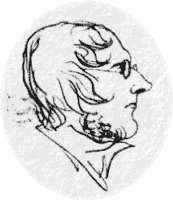
Patrick Branwell Brontë, better known as Branwell Brontë, was an English painter and writer. He was the only son of the Brontë family, and brother of the writers Charlotte, Emily and Anne.

The Brontë Parsonage Museum is a writer's house museum maintained by the Brontë Society in honour of the Brontë sisters – Charlotte, Emily and Anne. The museum is in the former Brontë family home, the parsonage in Haworth, West Yorkshire, England, where the sisters spent most of their lives and wrote their famous novels.
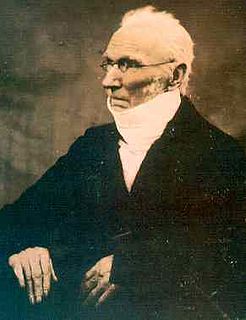
Patrick Brontë was an Irish Anglican priest and author who spent most of his adult life in England. He was the father of the writers Charlotte, Emily, and Anne Brontë, and of Branwell Brontë, his only son. Patrick outlived his wife, the former Maria Branwell, by forty years, by which time all of their children had died as well.

Jane Eyre is a 2006 television adaptation of Charlotte Brontë's 1847 novel of the same name. The story, which has been the subject of numerous television and film adaptations, is based on the life of the orphaned title character. This four-part BBC television drama serial adaptation was broadcast in the United Kingdom on BBC One.

Casterton is a small village and civil parish close to Kirkby Lonsdale on the River Lune in the south east corner of Cumbria, England. The population of the civil parish taken at the 2011 census was 425.
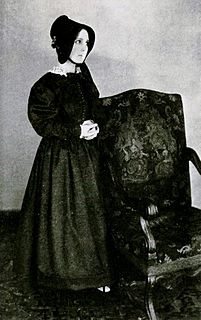
Jane Eyre is the fictional heroine of Charlotte Brontë's 1847 novel of the same name. Jane, an orphan, is employed as a governess, and becomes romantically involved with her employer, the mysterious and moody Edward Rochester. Jane is noted for her dependability, strong mindedness and individualism. She is prepared to face near-starvation, rather than enter a bigamous marriage, and she remains true to her Christian faith throughout. The author deliberately created Jane as an unglamorous figure, in contrast to conventional heroines of fiction, and possibly part-autobiographical. Jane has retained a strong influence on literature, especially romantic and feminist writing.

The Life of Charlotte Brontë is the posthumous biography of Charlotte Brontë by fellow novelist Elizabeth Gaskell. The first edition was published in 1857 by Smith, Elder & Co.. A major source was the hundreds of letters sent by Brontë to her lifelong friend Ellen Nussey.

Arthur Bell Nicholls was the husband of the English novelist Charlotte Brontë.

Cowan Bridge School refers to the Clergy Daughters' School, a school mainly for the daughters of middle class clergy founded in the 1820s. It was first located in the village of Cowan Bridge in the English county of Lancashire, where it was attended by the Brontë sisters. Two of the sisters, Maria and Elizabeth died from tuberculosis in the aftermath of a typhoid outbreak at the school. In the 1830s the school moved to Casterton, a few miles away, where it was amalgamated with another girls' school. The institution survived to the twenty-first century as Casterton School.
Maria Brontë was the eldest daughter of Patrick Brontë and Maria Brontë, née Maria Branwell.
Elizabeth Branwell was the aunt of the literary sisters Charlotte Brontë, Emily Brontë, and Anne Brontë.
Elizabeth Brontë was the second daughter and child of Reverend Patrick Brontë and his wife, Maria. She was born in Hartshead, Yorkshire.

Casterton School was an independent boarding and day school for girls aged 3 to 18 years in the village of Casterton in rural Cumbria. In its final years it also admitted boys, up to the age of 11. The school ceased to exist in 2013, though a preparatory school remains on the site. It merged with Sedbergh School, whose junior section now occupies the campus while Casterton's senior school pupils moved to the Sedbergh site.

William Carus Wilson was an English churchman and the founder and editor of the long-lived monthly The Children's Friend. He was the inspiration for Mr Brocklehurst, the autocratic head of Lowood School, depicted by Charlotte Brontë in her 1847 novel Jane Eyre.
